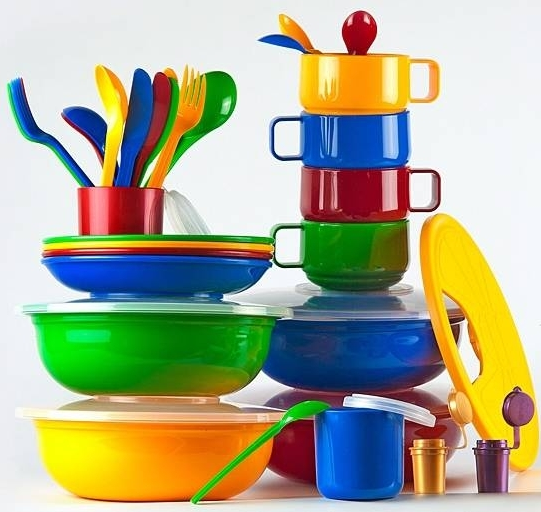

Order a call
 09.12.2019
09.12.2019
The label on your cookware can tell you a lot.
Disposable tableware is convenient and indispensable for many things: a quick snack on the street, going out into nature, a light buffet, etc. To properly use plastic products in everyday life, you need to know and observe the specifics of their use.
Most often, plastic tableware is made from materials such as polystyrene, polypropylene, polyolefin, polyester, polyamide, etc. These materials are used to produce cellophane, foil, and disposable tableware for cold and hot dishes.
With prolonged use, disposable tableware, especially plastic, begins to release harmful substances into food. In a word, when purchasing plastic containers and utensils, you should pay attention to the labeling. The marking indicates the material from which the products are made, under what conditions, in what temperature conditions, these containers should be used.
For example, reusing plastic bottles is often practiced in everyday life. This type of container can be reused if the label contains the term PET , which allows this to be done. But if you see a three in a triangle or the term PVC in front of you , it’s better not to risk it and just throw away such a bottle.
Let's look at the labeling of plastic utensils. The number indicating the type of plastic is located inside the triangle. Below the triangle is a letter abbreviation indicating the type of plastic. In general world practice, the following designations are used:
Containers that may come into contact with food display a fork or glass symbol.
PET or PETE - polyethylene terephthalate. Used for the manufacture of packaging (bottles, boxes, cans, etc.) for bottling soft drinks, juices, water.
HDPE (HDPE) - high density low pressure polyethylene. Used for the manufacture of products in contact with food, for the manufacture of toys. This mark is considered safe for food use.
PVC or PVC - polyvinyl chloride. Used for pipes, tubes, garden furniture, floor coverings, window profiles, blinds, detergent bottles and oilcloth. The material is potentially hazardous for food use.
LDPE (LDPE) - low density polyethylene of high pressure. It is used in the production of plastic bags, flexible plastic packaging and for the manufacture of products approved for packaging and capping medicines.
PP - polypropylene. Used in the automotive industry, in the manufacture of toys, as well as in the food industry, mainly in the manufacture of packaging. Polypropylene can withstand high temperatures, so the dishes can be used for hot food and drinks.
PS - polystyrene. It is used in the manufacture of thermal insulation boards for buildings, food packaging, cutlery and cups, CD boxes and other packaging, toys, dishes, and pens. Polystyrene utensils are only suitable for cold foods and soft drinks, since when heated or in contact with hot food they release styrene, a highly toxic substance. Under no circumstances should polystyrene utensils be used for hot foods, hot drinks, for heating food in a microwave oven, or as containers for alcoholic beverages.
OTHER or O - others. This group includes any other plastic that cannot be included in previous groups and is not toxic to the environment.
In addition, pay attention to the frost resistance of the containers and resistance to temperature changes. Many modern products can withstand temperatures quite comfortably, with an amplitude from minus forty to plus one hundred and forty. And at the same time, you can use them both in the freezer and in the microwave.
Plastic utensils have an expiration date. The higher it is, the safer the material from which it is made. You can find out expiration dates from the seller, who is required to provide a certificate for the product.
Head of the Laboratory of VTI of the Branch of the RSE on the PVC "National Center of Expertise" KKBTU MH RK
in Akmola region
Zhumagalieva G.K.